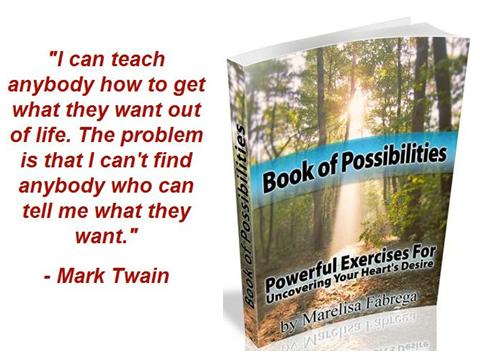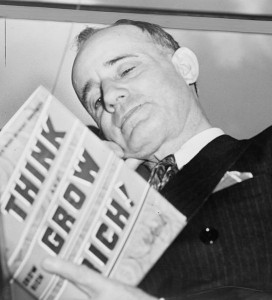 One of the main reasons why people don’t achieve their goals is because they lack the motivation to either get started, or to keep going once the going gets tough.
One of the main reasons why people don’t achieve their goals is because they lack the motivation to either get started, or to keep going once the going gets tough.
Luckily, there are many different strategies you can use in order to motivate yourself to work toward the achievement of you goals. Here are 21 ways to keep your motivation flying high:
1. Make sure that the goal is your own. Nothing will drain your energy as much as trying to go after a goal that someone else has set for you and which you don’t believe in. Think of the difference between the effort that you have to make in order to walk uphill, compared to the effort that you have to make in order to walk downhill.
- Taking action in order to achieve a goal that someone else has set for you is like walking uphill. Since the goal is not something that innately inspires you, you have to continually push yourself to act.
- Taking action in order to achieve a goal that is your own is like walking downhill. Since the goal is something that innately inspires you, it pulls you toward it like the force of gravity.
2. Use affirmations. Usually, I’m not a fan of affirmations. Telling yourself things such as, “I am now a millionaire”– when the truth is that your net worth is in the negative digits–, is not helpful in any way. However, affirmations such as the following are useful:
- By taking small steps on a consistent basis, I will achieve my goal.
- I have the ability to achieve anything I set my mind to.
- No matter the challenge, I will see it through.
- Each time I fall, I get back up again.
3. Engage in what you like best. As Charles M. Schwab once put it: “A man can succeed at almost anything for which he has unlimited enthusiasm.”
Napoleon Hill—author of the perennial best seller, “Think and Grow Rich”–explains that enthusiasm is easily expressed when one is inspired by a burning desire for something. Therefore, you need to set goals that you’re enthusiastic about. Think of enthusiasm as the flame that keeps your motivation burning.
4. Surround yourself with people who are enthusiastic. Other people can either dampen your enthusiasm and your motivation, or they can help you to keep your motivation high. Befriend people who will encourage you and challenge you to achieve your goals.
In addition, enthusiasm is contagious. When you’re around people who are enthusiastic about their lives and about their goals, their enthusiasm will rub off on you.
If you can’t find people who are enthusiastic, surround yourself with videos and audio programs of people who are enthusiastic, such as Brian Tracy, Tony Robbins, Earl Nightingale, Brian Tracy, Zig Ziglar, Denis Waitley, and Marelisa Fábrega (he, he he 🙂 ).
5. Stimulate yourself into a state of high enthusiasm. Napoleon Hill explains that everyone has something that arouses their enthusiasm–it could be something like the following:
- Going to museums to admire fine paintings;
- Listening to music;
- Spending time in nature;
- Wearing clothes that make you “look the part”;
- Reading books by authors that you admire; and so on.
He adds that all people of outstanding achievement have discovered ways and means of stimulating themselves into a state of high enthusiasm. Identify activities or situations that energize you, and engage in them as often as you can.
6. Ask yourself questions. Earl Prevette—author of “How to Turn Your Ability Into Cash”–explains that one of the best ways to generate enthusiasm in yourself is by asking yourself questions about your abilities, your ideas, and your progress. Likewise, if you want to generate enthusiasm in others, ask them questions. Prevette says the following:
“Ask enough questions and you will find the answer. Asking questions starts an endless chain of ideas, each one suggesting several others. Most inventions and improvements are the result of questions. Someone wanted to know the answer.”
Questions stir up ideas, arouse response, stimulate interest, and create desire. That is, they generate enthusiasm. Here are some questions you can use in order to begin generating enthusiasm:
- How can I have more fun doing this?
- What’s good about this situation?
- How can I continue moving forward?
- What’s the next best step that I can take?
- What do I want to happen here?
- How can I accelerate the speed at which I’m moving forward?
7. Create a “yes, but” list. Whatever the goal is that you’re trying to achieve, you can probably come up with a long list of reasons of why you can’t achieve it. These doubts linger in the back of your mind, eating away at your motivation. However, there’s a process you can use to help you assuage these doubts. I call it the “yes, but” approach.
Sit down and write down all of the reasons why you think that you may not be able to achieve your goals. Then, counter each of these with a “yes, but”. Here’s an example:
- Reason I can’t achieve my goal: I’m too old to go back to school.
- Response: Yes, I am older, but my life experience is an advantage that younger people don’t have, and which will help me to do well in my studies.
Addressing your doubts and looking for ways to knock them down or turn them into positives will help raise your motivation.
8. Focus. Still another way to generate enthusiasm is by giving your full attention to what you’re doing. Prevette explains that doing any job well requires concentration of thought. Integrate your mental attributes completely, pull together, and pay strict attention to what you’re doing. Here’s what Prevette says:
“It is not putting in hours, but putting yourself into the hours that wins promotion, earns more money, precipitates an increase in salary and gets you ahead.”
Whatever it is that you’re doing, look for ways to pull your attention together and place it fully on the activity that you’re carrying out. It’s very difficult to generate enthusiasm when half of your mind is on one thing, and the other half is thinking of something else.
9. Try the “as if” principle. As Shakespeare writes in Act III of “Hamlet: “Assume a virtue, if you have it not.” Norman Vincent Peale explains in his “Enthusiasm Action Book” that you can deliberately make yourself enthusiastic. The process is as follows:
- Hold an image of an enthusiastic you in your consciousness.
- Then, proceed to develop that characteristic by acting as if you already possess it.
- Third, believe and affirm that you’re in the process of self-creating the quality that you wish to possess.
Act “as if” you’re enthusiastic and motivated; soon, you will be.
10. Focus on your present reality. Steve Pavlina—owner of the popular blog, “Personal Development for Smart People”—recommends that you motivate yourself to work on your goal by thinking about how it will improve the quality of your life right now.
For example, suppose that you currently work at a job that you hate and your goal is to start your own business. How will the act of working toward your goal improve your life right now? Look at the following two scenarios:
- Scenario One: You wake up, go to a job you hate, and then you come home and read magazines or watch television until it’s time for bed.
- Scenario Two: You wake up earlier than usual and use that extra hour to work on your goal of starting your own business. Then, you go to work, come home, watch a little TV, and go to bed early so that you can repeat the process the next day.
If you follow Scenario One, you’ll probably be frustrated all day long. However, if you follow Scenario Two, you’ll probably feel enthusiastic all day.
In Scenario Two, even though you’re still working at a job you hate, you’re taking steps toward creating your own business. This brightens your entire day. That is, working toward your goal improves your life right away. And this will increase your motivation.
11. Generate enthusiasm and motivation by feeling appreciation. One of the emotions that helps to generate enthusiasm—and, therefore, helps to keep your motivation high–is gratitude. Feel gratitude for everything that you have that is helping you to achieve your goal. Here are three examples:
- Feel grateful that you have the health that is necessary to achieve your goal.
- Feel grateful that you have access to the internet which allows you to quickly find the information that you need in order to achieve your goal.
- Feel grateful that—through books—you have access to the stories of people who have already achieved what you’re trying to accomplish. This allows you to use these people as mentors and role models (even if you’ll never meet or speak to them).
12. Make the journey more enjoyable. As Earl Nightingale once said, “Happiness comes from direction not arrival. It’s the trip that is enjoyable. Moving toward our goals is more satisfying than accomplishing them.”
If moving toward your goal is not currently satisfying, ask yourself how you can make the action that you need to take in order to achieve your goal more enjoyable. Here are some ways in which you can do this:
- Add variety: work in a different location or try a different work method.
- Balance physical work with mental work: if your goal requires a lot of mental work, take a break every now and then and do something physical. For example, you can go for a jog or turn on some music and dance around the room.
- Involve others: ask a friend to read the first chapter of your novel and discuss it with you, or get your sister to train for the marathon with you.
- Avoid the unpleasant: if there’s something that you need to do in order to achieve your goal which you find highly unpleasant, look for a way to outsource it, delegate it, or eliminate it.
- Make the task more enjoyable: if there’s a task that you find unpleasant and which you can’t avoid doing, find a way to make it more enjoyable, even if it means that it will take longer.
Try to remain in a state of joy—or at the very least contentment–throughout the entire journey toward the achievement of your goal. This means that sometimes you’ll have to sacrifice efficiency in favor of joy. And that’s OK.
13. Be motivated by the past. Make a list of all of your past successes. Whenever you’re feeling unmotivated, take out your list. Reminding yourself of everything that you’ve accomplished so far is a great way to pump yourself up when you feel like your efforts are not producing the results you were hoping for.
14. Expect obstacles. If you’re trying to do something worthwhile, it’s not a question of “if” you’ll come across an obstacle, it’s a question of “when”. Therefore, when you do meet an obstacle, you need to stop acting like something out of the ordinary is happening. Simply say to the obstacle: “Ah, there you are. I’ve been expecting you.” Accept that overcoming obstacles is part of the process to reaching your goals.
This applies to all types of obstacles: people, events, circumstances, and so on.
15. Boost your self-esteem. Your motivation may be low because you don’t feel that you’re capable of achieving your goals. If you think that you don’t have what it takes in order to achieve your objectives, your motivation will suffer. If this is the case, take steps to increase your self-confidence, and your motivation will rise accordingly.
16. Create checklists. One of the best ways to make sure that you stay motivated to do what it takes in order to reach a goal is to know exactly what needs to be done, and to keep track of the progress that you’re making. A great way to do this is by creating a checklist.
For example, if one of your goals is to start a successful blog, set the goal of writing at least two blog posts a week. Then, create a checklist of everything that you have to do in order to write and publish a blog post. Twice a week, sit down and go down your checklist, ticking off each box as you complete each step of the process.
17. Join a challenge. Let’s face it: we all love a challenge. Whatever it is that you’re trying to achieve, there’s probably a group of people who are trying to achieve the same goal, and who have set up a challenge to motivate themselves to achieve that goal.
One example is NaNoWriMo. Writing a novel is one of those universal dreams; it’s something that almost everyone has on their bucket list. Therefore, the NaNoWriMo challenge was created: every year—during the month of November—people from all over the world take the challenge to write a 50,000 word novel in one month.
Whatever your goal is, find a challenge that’s related to that goal, and take the challenge.
18. Motivate someone else to go after their dreams. Find someone else who has a dream that they’re trying to achieve, and motivate them to keep going. Point out their strengths, applaud any small progress that they make, and help them generate ideas on how to move forward. Remember that you get what you give, so by giving someone else motivation, you’ll become motivated.
19. Keep a journal. For a lot of people, writing is therapeutic. If you’re feeling unmotivated, write about it. Ask yourself why you’re feeling unmotivated and then pour your heart out in your journal. In addition, ask yourself what you need in order to feel motivated again.
20. Give yourself a break. If you’re constantly “on”, and you’re always striving to achieve your goal, sooner or later, you’re going to burn out. Allow yourself to take breaks and do stuff that’s not productive, but that you enjoy doing. We all need some downtime.
- Is there a TV show you really enjoy? Put it on your schedule.
- Is there a video game you love to play? Give yourself a chunk of time to just sit back and play.
- Is there a trashy novel you’ve been wanting to read? Take a weekend off, go to the beach, and sit under a beach umbrella with your novel.
Think of these scheduled breaks as an opportunity to recharge your battery, so that you’re fully charged and ready to go when it’s time to get back to working on your goal.
21. Begin. Whatever you want to do, begin it. As Prevette explains, the law of nature is the following: “Do the thing, and you shall have the power.”
Start learning about the topic at hand; the more you know about something that more likely you are to become enthusiastic about it. In addition, set small goals for yourself and begin to achieve them. These small achievements will help you to generate the enthusiasm that you’ll need to keep going.
Conclusion
In order to live your best life, you need to set goals. And in order to work toward the achievement of those goals, you need motivation. Use the 21 strategies described above in order to keep your motivation high.



















Related Posts:
1. How to Develop Your Character – Benjamin Franklin’s Thirteen Virtues
2. How to Level Up In Life – Turn Your Life Into a Game
3. Motivate Yourself By Appealing to Your Intrinsic Motivation
4. The Three-Step Formula for Success
Did you enjoy this article? Subscribe to “Daring to Live Fully” by RSS or by email, and get free updates.
 Several years ago, the film “The Mask of Zorro”—starring Antonio Banderas, Anthony Hopkins and Catherine Zeta Jones—was playing in movie theaters. The tale of Zorro is well-known: Zorro was a masked swordsman who was a champion of the people and who fought against official corruption in early 19th century California.
Several years ago, the film “The Mask of Zorro”—starring Antonio Banderas, Anthony Hopkins and Catherine Zeta Jones—was playing in movie theaters. The tale of Zorro is well-known: Zorro was a masked swordsman who was a champion of the people and who fought against official corruption in early 19th century California.


























 Marelisa Fabrega is a lawyer and entrepreneur. She holds a Bachelor of Science in Business Administration from Georgetown University in Washington, D.C., as well as a Juris Doctor from the Georgetown University Law Center. You can learn more about her
Marelisa Fabrega is a lawyer and entrepreneur. She holds a Bachelor of Science in Business Administration from Georgetown University in Washington, D.C., as well as a Juris Doctor from the Georgetown University Law Center. You can learn more about her 





